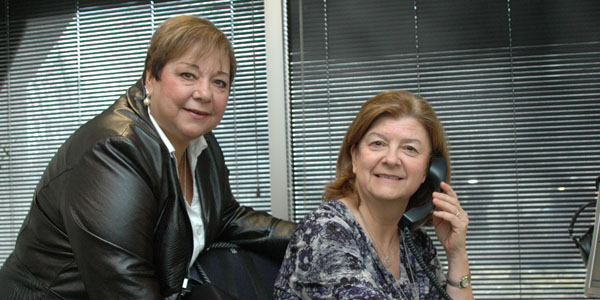ACA has home health care industry uneasy

When Rae Szymanski decided to go to nursing school, she thought about working at a hospital. But her college experience changed her direction.
“I went to NYU nursing school, and there, you really got exposure to the community and it clicked with me,” said Szymanski, who attended the school almost forty years ago and fell in love with caregiving. She also learned even then that the health care industry was destined to change.
At the time, she anticipated it. “The hospital was going to shrink. It would be a place where people go to get cut up, sewn up and sent home, and that”™s what”™s happening. That resonated with me.” Her foresight and desire to work with people in the community lead her to the home health care industry.
Szymanski, now executive vice president and COO of the Visiting Nurses Association (VNA) of Hudson Valley, said while the transition for hospitals took four decades, there are changes in the home health care industry that are happening at “light year speed.” That”™s at least partially due to some changes related to the Affordable Care Act (ACA), which according to the Obama administration will make health care accessible to everyone and keep Medicare and Medicaid “more secure.”
Security in the home health care industry, however, has been fleeting. One issue facing the VNA and other organizations in that industry is the cuts associated with the ACA. The American Health Lawyers Association published a report which points to a potentially grim future for many in home health care: the ACA is slated to reduce Medicare spending on home health care services by $4.2 billion between 2010 and 2014. That figure is expected to exceed more than $39.5 billion by 2019.
The VNA of Hudson Valley has already been “clobbered with cuts” according to VNA President and CEO Michele Quirolo. There was a “retroactive take back” for Medicaid services provided in 2009, said Quirolo, and in 2011 the governor enacted a retroactive recovery of funds for services rendered in 2009 and beyond for some organizations.
“So how do you budget when you complete a budget for ”™12?” Quirolo asked rhetorically. “All of a sudden you”™re going to have money taken away? It has put my licensed agency in the red.” Adding to the financial burden of spending cuts and retroactive billing is the anticipated mandate that insurance should be offered to all employees. “In home health care, particularly in New York, there are a lot of hourly workers, particularly home health aides,” Quirolo said. “They currently don”™t enjoy full benefits by virtue of the work they do. So do you take the chance and cut hours down to 29 hours so that you don”™t have to pay it? It could bankrupt the organization.”
Szymanski added that if it”™s a struggle for larger organizations, it must be an enormous burden for independently owned and operated home health care companies. She believes smaller service providers will soon have no choice but to partner with a hospital or Accountable Care Organization (ACO).
Rosa Barksdale, owner and CEO of Barksdale Home Care Services Corp., understands that concern. Barksdale has run her independently owned home health care service for roughly 30 years. “The smaller organizations have to be cognizant,” she said. “The patients are the home care business; the home care agency now has to contract with managed care programs to get the business.”
Although she recognizes the challenges, Barksdale sees the benefits of the ACA. “We have to manage with less and minimize the waste in order to keep costs down to keep up with modern technology in the ways we bill and operate.” But, she added, “Clients will have better access to home care.” In the end, it”™s about the patient.
The VNA of Hudson Valley champions that mission of providing quality health care to all people in their communities. Despite financial challenges, the VNA of Hudson Valley was able to remain committed to that idea by expanding their telehealth services, which allows a virtual nurse to offer care to up to 60 patients a day through technology similar to Skype.
Szymanski believes you have to stay on the cutting edge of technology even as more changes and challenges occur. She also noted those changes affiliated with the ACA could end up being good. “It”™s still a great opportunity bringing great change, and who knows, maybe home health won”™t be an afterthought anymore.”